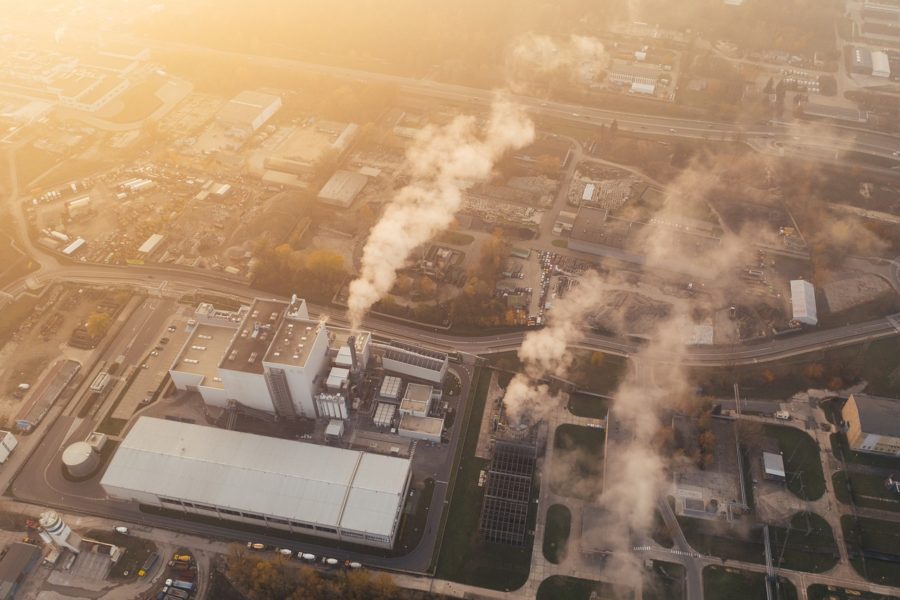Carbon Emission: Government Plans and the Rising Technology
The brilliant climate, fulsome sunlight, glamorous society and its dazzling future. What do these have in common? They all intertwine in an event related with the substance known as carbon dioxide. Carbon dioxide is necessary in the atmosphere for plants to grow and humans to exist. However, there are undesirable outcomes for over production or release of huge, sustainable amounts of carbon dioxide into the atmosphere. Many people have heard of a greenhouse, and to some extent, have the knowledge that it can trap heat with its glass walls for plants to grow faster and more effectively in colder locations. This model can be expanded into Earth’s atmosphere with the growing layer of carbon dioxide from carbon emission like the glass walls of a greenhouse. If it were to grow thicker and thicker, more heat will be trapped inside of it. This is known as the greenhouse effect. It illustrates the increasing carbon dioxide (greenhouse gas) accumulation within the atmosphere creating a denser barrier, trapping more and more heat or sunlight in the Earth’s atmosphere and preventing it from leaving after it enters. The greenhouse effect is naturally good, but the human actions of digging and burning fossil fuels, polluting the air and other excavations will release carbon dioxide into the atmosphere and that creates an unfavorable situation for the environment. Our climate is warmer every year. Weather is becoming too random with more frequent natural disasters, glaciers at the poles are melting, and ecosystems are deteriorating like the Great Barrier Reef. The last two centuries of human activity have made the carbon content in the atmosphere increase by 50%. The urgency to solve these problems are real and governments have taken moves to try to reduce this rapid increase in carbon emission and its result, global warming.
Government Chasing the Tail of Carbon Emissions
President Biden, and his administration, signed the Inflation Reduction act which has a section to deal with the problem of carbon emissions and air pollution. The bipartisan Infrastructure law, signed in November of 2021, gave up to 108 billion dollars of funding to public transportation projects for reducing carbon emission. Biden dealt with two major parts of emission, which are by transportation and energy production. Biden pledged to decarbonize the power businesses by 2035. Stricter power plant regulations were made by the EPA for new and existing power plants. It can prevent 1,300 premature deaths, 800 hospital and ER visits, and 300,000 asthma attacks according to the EPA. This is a big part of Biden’s administration push to reduce carbon emissions and reduce air pollution. There are many ways for the plants to react to this act, such as installing expensive carbon capture technology to reduce emission or change to another form of energy such as hydrogen. Carbon capture technology is not fully developed and has not been used in the power plants currently in the United States. However, it is a rising technology with past tests and a compelling future. There are trials of the technology in some places that are shut down mainly due to the cost to build, yet successful plans like Boundary dam’s carbon capture technology catches around a quarter million tons of carbon. Carbon capture technology works by being on top of the carbon emitter/smokestack of a power plant and captures the carbon when it is released and stores it underground. This technology is expensive due to it not being fully developed. The plan, if fully run and successful, is predicted to reduce carbon dioxide by 617 metric tons, which is equivalent to 137 million cars based on EPA estimates. They hope to achieve a net zero carbon emission in power plants by 2035 according to CBS news. Government actions are focused on reducing carbon emission, global warming, and greenhouse effects. Other groups and corporations are also working towards this goal.
Electric Vehicle and Lithium- Scope into the future?
The electric vehicles are a prominent example of technology that can help with the current global situation. The Bipartisan Infrastructure Law works to build more electric vehicles, charging stations, and puts in more money for new clean energy and emission reduction technologies. Cars are a big culprit of carbon emission, so to have emission neutral technology is important to reduce emissions. The creation of electric vehicles requires lithium for the battery, an important part to the vehicle. San Francisco’s Silicon Valley may be less popular than the new valley that is on the rise. Lithium Valley, which is in southern California, was found to have the world’s largest lithium deposits. This can change the situation of America getting Lithium from other countries, as less than 2% of Lithium was originally produced at one mine in the United State. This new discovery of a tremendous amount of Lithium can create a new condition for the valley and electric vehicles or other technology that needs lithium-ion batteries. The valley is estimated to be able to produce 600,000 tons of Lithium a year which is greater than the world’s demand. The company mining the Lithium wants to produce a geothermal energy power plant giving a source of renewable energy with the Lithium. However, Lithium mining consumes a lot of energy and water which can result in drying up the water in the Salton Sea where the lithium is located. California is a region with water a shortage, so the possible consequences are harder to predict. Along with it, Lithium mining can leave toxic residues behind and create a carbon footprint from the mining. Therefore, the production of electric cars to reduce carbon emission from normal cars, compared to the emissions of the mining, may or may not even out in the future. It is certain the “Lithium Valley” will be a significant location for a world looking towards green technology to help with global warming from carbon emission.
How about using Renewable Energy?
Renewable energy is popular in trying to reduce the reliance on fossil fuel. Solar and wind energy are the most known renewable energy sources because of the solar panels and wind turbines bringing in reliable clean energy and have a neutral carbon footprint. However, the amount of space that these technologies take up are greater than fossil fuels, while producing less energy than fossil fuel can. Both sources of energy production can cause threats to wildlife. Wind turbines can hurt life in the sky, such as birds, or the bigger issues such as land degradation and habitat loss for animals. The transition from fossil fuels to renewable energy technologies and carbon capture technologies, for cleaner energy, are big steps in the world’s effort to help with global warming and climate change. Government and industry actions are powerful transitions into a new world for technology, as the issues of global warming are being addressed. The ultimate benefit for the people, even if global warming is not their concern, is cheaper energy. Either way it is a win.











